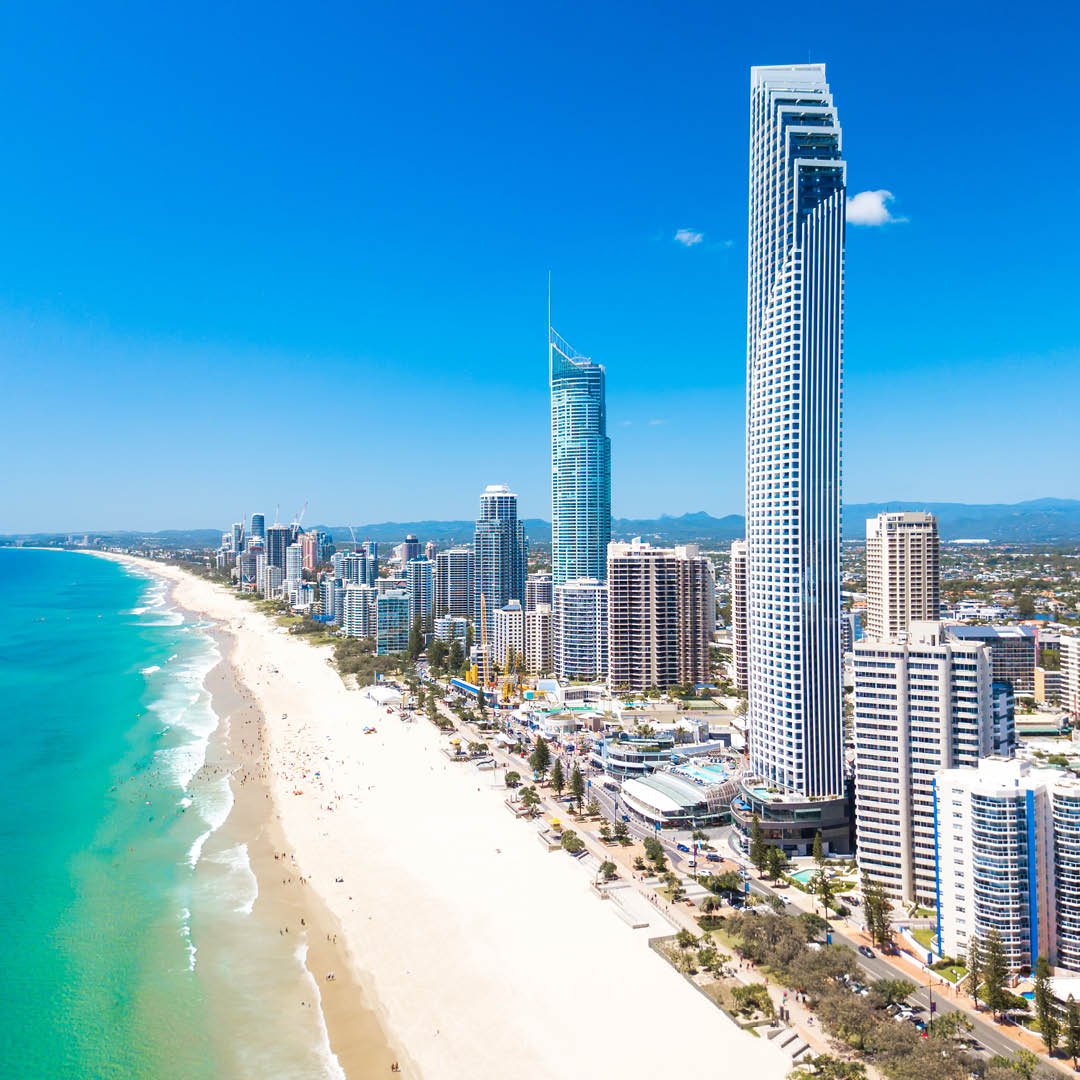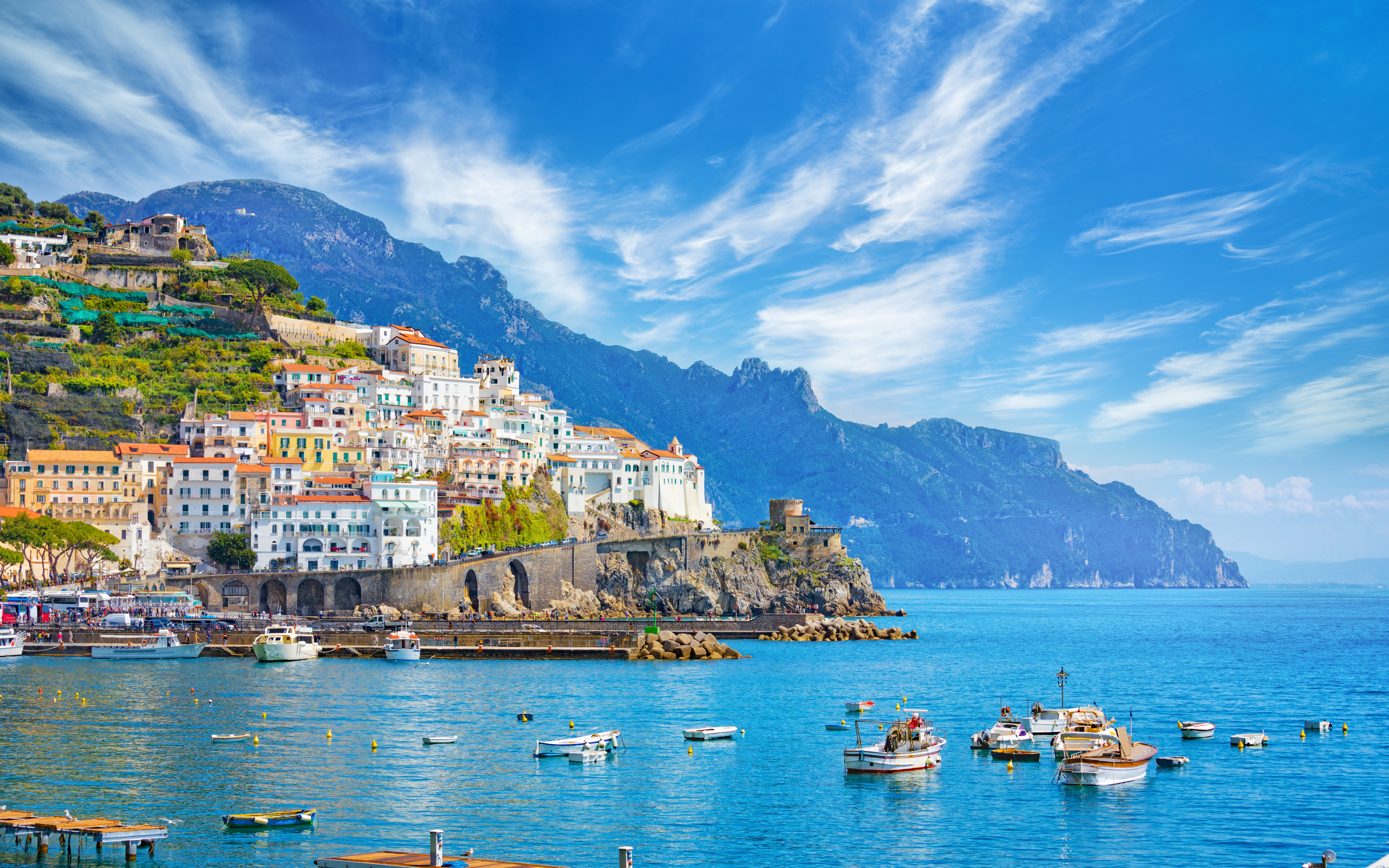Intelligent Investment
Full Year 2024 Global Hotel Capital Flows
Trends & Outlook
April 24, 2025 10 Minute Read

Executive Summary
“2024 marked a significant rebound in global hotel investment, driven by strong growth in cross-border transactions. The U.S. remains a buyers' market but should see net asset value growth through the end of the decade. EMEA is benefitting from more international tourism, making it an attractive destination, particularly for luxury and resort hotels. Asia-Pacific continues to be a powerhouse of growth, creating investment opportunities in value-add strategies. Potential risks include geopolitical factors affecting travel, currency fluctuations, and inflationary pressures across the globe.”
Rachael Rothman (CFA, ISHC)
Head of Hotels Research & Data Analytics
This report was compiled before the emergence of recent geopolitical and trade challenges, most notably U.S. tariffs and stock market volatility, in early April 2025. With the situation evolving on a daily basis, it is too early to gauge the effect it may have on global hotel capital flows in the year ahead.
Americas
EMEA emerged as the dominant source of cross-border capital in the Americas in 2024, accounting for 74% of inbound investment volumes. However, this was partly due to Asia-Pacific investors, particularly those from Greater China, reducing their activity. Full-service hotels remained popular, comprising 87% of all cross-border investment last year. Upper upscale properties accounted for 49% of investment volumes in 2024, an increase of 13 percentage points since the onset of the COVID-19 pandemic. Hotel investment in the Americas is expected to strengthen this year on the back of narrowing bid-ask spread and lower interest rates.
EMEA
In EMEA, foreign capital inflows accounted for 61% of total hotel investment volumes, driven by interest from U.S.-based investors. The UK remained the top destination, while Italy, Portugal, and Greece, showed substantial growth in cross-border investment. Looking ahead to 2025, stabilized interest rates, solid operating performance, and the projected medium-term demand/supply dynamics are expected to sustain investment momentum.
Asia-Pacific
Total hotel investment volumes reached 90% of 2019 levels last year, outpacing EMEA (75%) and the Americas (60%), driven by strong purchasing by investors from within the region. The U.S. remained the leading source of cross-border capital, with annual inflows up 23% since the onset of COVID-19. Japan saw a significant rise in capital inflows in 2024, comprising nearly 50% of cross-border investment in the region. Investor sentiment is expected to remain strong in 2025, driven by prospects of lower interest rates, occupancy growth, and limited supply. Cross-border capital should remain focused on Japan, driven by lower debt costs and a weak Yen, as well as Australia, Southeast Asia, and Korea. A notable shift toward upscale and upper midscale products involving value-add strategies is expected.
Global Hotel Capital Investment Flows
Highlights
- Global cross-border hotel investment grew 54% year-over-year in 2024, boosting total hotel transaction volumes by 16% year-over-year.
- Driven by strong interest in European markets, investment in EMEA outperformed other regions, with cross-border and total volumes increasing 112% year-over-year and 65% year-over-year, respectively.
- Global cross-border hotel investment as a percentage of total transaction volume exceeded pre-pandemic levels in 2024. This is unlike other commercial real estate asset classes, where cross-border investment has yet to fully recover. Strong cross-border investment over the past decade has resulted in a ~US$50 billion increase in foreign investors’ hotel ownership and the significant expansion of hotel brands worldwide.
- Asia-Pacific has emerged as a bright spot since COVID-19, logging a 12% increase in annual capital inflows during 2020-2024, driven by steady purchasing by U.S. investors. At the same time, reduced outbound investment from Greater China has led to declines of 52% and 70% in annual capital inflows into EMEA and the Americas, respectively, compared with the 2014-2019 period.
- Over the last five years, Japan and Italy have been the only destinations among the top ten most popular markets to register increases in annual inbound hotel investment compared to the 2014-2019 period, up 67% and 15%, respectively. In terms of outbound investment, investors from Greater China have significantly reduced their purchasing activity, with annual average outflows decreasing by 83% since COVID-19.
- The global hotel investment outlook for 2025 is positive, both in terms of domestic and cross-border investment. Across all three regions, CBRE expects lower interest rates, a positive travel and tourism outlook, and favorable demand/supply fundamentals to drive more capital flows into the hotel sector.
Growth in Cross-Border Investment Outpaced Total Investment by 3:1 in 2024
- In 2021, cross-border hotel investment dropped to 20%of total hotel investment due to the COVID-19 pandemic. By 2024, cross-border investment’s share of total hotel investment had rebounded to 34%, slightly exceeding the pre-COVID-19 level of 33%.
- Cross-border investment volume increased by 55%year-over-year in 2024, more than triple the 16% year-over-year rise in overall hotel investment.
- CBRE is cautiously optimistic for growth in global hotel investment to continue in 2025, driven by improved global traveler demand, lower interest rates, and accumulated dry powder.
Figure 1: Global Cross-Border Hotel Investment as a Percentage of Total Hotel Investment Volume
Source: CBRE Research, MSCI RCA, Jan 2025.
Global Cross-Border Investment Rebounds Strongly, Led by EMEA
- Total hotel investment in EMEA rose 65% year-over-year in 2024, driven by a 112% year-over-year increase in cross-border investment. Strong investment in the region reflected stabilized interest rates and increased availability of accretive debt; continued strong fundamentals; and expectations for limited supply growth due to elevated development costs.
- Cross-border hotel investment in Asia-Pacific also picked up in 2024, rising 9% year-over-year, but the Americas experienced a 9.3% year-over-year decline. This was driven by a 17.1% year-over-year drop in cross-border investment in the U.S., which was likely due to the strong U.S. dollar, elevated interest rates, and lackluster U.S. hotel fundamentals.
Figure 2: 2024 Cross-Border Hotel Investment Volume by Region
Source: CBRE Research, MSCI RCA, Jan 2025.
Figure 3: 2024 Total Hotel Investment Volume by Region
Source: CBRE Research, MSCI RCA, Jan 2025.
Hotels Lead in Share of Cross-Border Investment, Outpacing Other CRE Classes
- In 2024, cross-border investment in hotels surpassed 2019 levels, while it continued to lag in other commercial real estate asset types.
- Many hotel brands have expanded their global footprint in the last decade, particularly in emerging markets. This expansion has been supported by robust cross-border investment, which drove a ~US$50 billion increase in foreign investors' hotel ownership worldwide from 2015-2024.
Figure 4: Global Cross-Border Investment as a Percentage of Total Investment
Other CRE sectors: Transaction data includes properties and portfolios above US$10 million.
Source: CBRE Research, MSCI RCA, Jan 2025.
Figure 5: Global Net Hotel Investment by Type of Capital, 2015 – 2024
Other CRE sectors: Transaction data includes properties and portfolios above US$10 million.
Source: CBRE Research, MSCI RCA, Jan 2025.
Cross-Regional Capital Inflow to Asia-Pacific Rises Post-2019; Other Regions See Pullback
- Since 2020, the COVID-19 pandemic and elevated interest rates have reduced cross-regional capital flows globally. On an annual average basis, cross-regional capital inflows to the Americas and EMEA hotels sectors declined by 70% and 50%, respectively, compared to the pre-pandemic period. However, Asia-Pacific witnessed a 12.2%increase in capital inflows from the Americas and EMEA during 2020-2024, supported by more favorable economic growth, lower interest rates and weakened currencies.
- The decline in cross-regional investment mirrored the weakness in intra-regional and domestic hotel investment globally. As a result, a substantial volume of dry powder has now accumulated and is expected to be deployed into hotel investment as capital markets conditions improve in 2025.
Figure 6 & 7: Annual Average Cross-Region Investment Flows: 2014-2019 & 2020-2024
Source: CBRE Research, MSCI RCA, Jan 2025.
Hotels in Japan and Italy Attract More International Investment
- Of the top 10 markets, only Japan and Italy have seen higher cross-border capital flows since the onset of the COVID-19 pandemic.
- A more stable economy, low interest rates, and currency weakness made Japan an attractive destination for investment. In Italy, the increase in cross-border capital flows was driven by the relative importance of international leisure demand post-pandemic, leading to the creation of better, more international-quality leisure assets.
- All top global source markets have experienced declines in annual average cross-border capital outflows since 2020. The U.S., Singapore, and UK remain top source markets.
- Annual capital outflows into hotels from China have declined by 96% compared to pre-COVID-19 levels. This has caused cross-border investment volume to decline in leading markets such as the U.S. and the UK.
Figure 8: Annual Cross-Border Investment in Top 10 Global Destinations, Pre/Post COVID-19
Top 10 ranking is based on total cross-border volume in 2014-2024 of source markets or destinations.
Source: CBRE Research, MSCI RCA, Jan 2025.
Figure 9: Annual Cross-Border Investment in Top 10 Source Markets, Pre/Post COVID-19
Top 10 ranking is based on total cross-border volume in 2014-2024 of source markets or destinations.
Source: CBRE Research, MSCI RCA, Jan 2025.
Americas Hotel Capital Investment Flows
“The U.S. remains a buyers’ market amid muted transaction volume due to a wide bid-ask spread. We expect a significant run up in net asset value through the end of this decade due to a significant imbalance of low supply growth and steady demand for hotel rooms. Investments made today will be rewarded in the coming cycle.”
Robert J. Webster
Vice Chairman and President, CBRE Hotels America
Highlights
- After two and a half years of contraction, 2025 could be an improved year for hotel investment in the Americas, including cross-border ventures. With hotel fundamentals expected to improve and interest rates projected to decline further, the outlook is promising, with considerable dry powder poised for deployment as capital markets conditions improve.
- With Asia-Pacific investors, particularly those from Greater China, having reduced their cross-border investment into the Americas in recent years, EMEA has emerged as the dominant source of capital inflow, accounting for 74% of cross-border hotel investment in the Americas in 2024.
- Cross-border capital entering the Americas continues to favor full-service hotels, which accounted for 87% of all cross-border investment in 2024. However, preferences have shifted from luxury to upper upscale properties, which have increased their share of cross-border investment by 13 percentage points since the COVID-19 pandemic.
- CBRE believes there is potential for increased activity in 2025 given the reinvigorated investment narrative around hotels that has developed following last year’s U.S. presidential election.
Total Investment Volume in the Americas Declines 9.9% Year-Over-Year in 2024
- In 2024, cross-border investments’ share of overall hotel investment in the Americas remained well below the pre-COVID-19 level of 15% - 25% due to the strength of the U.S. dollar and high interest rates.
- CBRE expects to see an uptick in hotel investment volume in 2025, underpinned by the transition to risk-on sentiment in hotels caused by a build-up in dry powder and a narrowing in the bid-ask spread due to lower interest rates and spreads as the lending market heats up.
- With long-dated investment assets wearing thin on private equity balance sheets and impairing future fundraising volume, the ask will move closer to the bid in a well-capitalized market of investors.
Figure 10: Cross-Border Hotel Investment as a Percentage of Total Americas Hotel Investment Volume
Source: CBRE Research, MSCI RCA, Jan 2025.
EMEA Replaces Asia-Pacific as Dominant Cross-Border Source Market for Americas as Chinese Investment Pulls Back
- Since the onset of the COVID-19 pandemic, capital from Canada, Singapore and the UK has accounted for a larger share of cross-border hotel investment into the Americas. However, the UK is the only one that has increased its volume of outbound investment in the Americas, with capital outflows rising by 52% to an average of US$600 million annually. While holding steady in recent years, the recent introduction of U.S. tariffs on Canadian imports could impact the flow of Canadian capital into the U.S.
- Since 2020, China has fallen out of the rankings of the top 10 cross-border hotel investors in the Americas, with its share of investment falling from 20% to less than 1%. During this period, China's outbound hotel investment has declined across all regions amid challenging domestic economic headwinds and restrictions on capital outflows.
Figure 11: Share of American Hotels’ Cross-Border Investment by Source Region
Top 10 ranking is based on destinations' total cross-border volume in 2014-2024.
Source: CBRE Research, MSCI RCA, Jan 2025.
Figure 12: Annual Cross-Border Volume of Americas Hotels’ Top 10 Capital Source Markets
Top 10 ranking is based on destinations' total cross-border volume in 2014-2024.
Source: CBRE Research, MSCI RCA, Jan 2025.
Cross-Border Capital to Americas Continues to Favor Full-Service Hotels; Preferences Shift from Luxury to Upper Upscale Properties
- Upper priced hotels accounted for 78% of cross-border investment into the U.S. in 2024, a 9 percentage point increase from the pre-COVID-19 period, with annual average volumes in this category declining relatively less than those for limited-service assets.
- Upper upscale hotels now account for a larger share of cross border investment, with luxury’s share declining from 33.4% of the total before COVID-19 to 28.9%.
Figure 13: Cross-Border Investment by Americas Hotel Types (2014-2024)
Source: CBRE Research, MSCI RCA, Jan 2025.
Figure 14: Cross-Border Investment by US Hotel Types & Tiers
Source: CBRE Research, MSCI RCA, Jan 2025.
Outlook
Despite Americas hotel investment volumes falling again in 2024 after a significant downturn in 2023, several factors point to the likelihood of an improvement this year. The Fed is likely to lower interest rates further, albeit more slowly than initially expected. Interest rate spreads have compressed meaningfully as the number of hotel debt market participants has increased. This is lowering borrowing costs, supporting market activity and pricing. To deploy capital, bidders are readjusting down their IRR underwriting thresholds, which reflects improved investor sentiment. This will move the bid closer to the ask in the coming year. Current RevPAR growth expectations have improved, which should generate growth in Net Operating Income despite elevated cost inputs in labor, insurance and real estate taxes, which will also improve valuation metrics in some markets.
On the sell side, hotel owners have been reluctant to clear their assets at the market bid, largely because they were under no pressure to sell. However, pressure is mounting from other stakeholders in the capital stack, particularly on long-dated assets in funds. Lenders have continued to extend loan maturities through this valuation transition but are becoming less inclined to extend further without loan balance pay-downs. With pay-downs not likely for most borrowers, this will force a reconsideration of whether assets should be priced down to meet the improving bid.
At the same time, LP stakeholders are becoming more involved in pressing liquidity for long-dated asset investments. Mathematically, most LP distributions have been significantly impaired by the increase in debt service payments on floating rate debt loans. Without visibility on any meaningful improvement in cash flow or reduction in interest payments, LP’s are fatigued and less likely to invest significant capital in future fund raises without some redemption from legacy funds. This will put pressure on GPs to consider clearing their legacy assets in an improving bid environment, with sponsor liquidity pressure already showing up on radar screens.
Although tariffs have introduced some uncertainty, our team in capital markets is working from the assumption that any impact on U.S. hotel demand in 2025 will be mild. We estimate this effect at around 25 million out of 1.3 billion room nights occupied, or 0.2% of total demand. In our view, the decline in discretionary inbound travel will likely be offset by a more U.S. travelers opting for domestic vacations instead of international trips.
EMEA Hotel Capital Investment Flows
“Global capital continues to see material growth opportunities in European real estate, linked to the amount of value that can be added through better branding, management, investment in assets and roll-out strategies. Unless geopolitics negatively affects travel demand, expect demand/supply dynamics to make Europe an attractive destination for hotel-related investment.”
Kenneth Hatton
Head of Hotels, Europe
Highlights
- EMEA markets have consistently been the most attractive for cross-border hotel investment compared with other regions. Last year saw an accelerated recovery in foreign capital inflows, which accounted for 61% of total hotel investment volume in the region, exceeding 2019's 50%. Buoyed by a robust U.S. dollar, RevPAR growth of 6% year-over-year and steady economic expansion, capital flows from the U.S. into EMEA hotels rose to US$6.3 billion in 2024. This represented more than 2.5x the volume recorded in 2019.
- While intra-EMEA capital flows have historically comprised more than 60% of total cross-border investment volume, 2024 saw a 41 percentage point increase in U.S. investors’ share of EMEA investment volume, reducing intra-EMEA's share to 48%.
- Despite suffering a 46% decline in average annual cross border hotel investment since the COVID-19 pandemic, the UK remains the most popular market in EMEA for foreign capital. A post-COVID-19 shift in focus to Southern Europe has pushed up cross-border investment in Italy, Portugal, and Greece, each of which has more than doubled its share of total EMEA capital inflows.
- The stabilization of interest rates, operating performance, and favorable demand/supply fundamentals suggest continued cross-border interest in Europe this year. Additionally, Europe may benefit from any dislocation in travel demand linked to geopolitical factors, potentially attracting a larger share of outbound travelers from Canada, Latin America, the Middle East, and Asia. In the Middle East, Saudi Arabia is shifting from a domestically focused market to one targeting inbound investors through the Public Investment Fund's initiatives. The UAE remains the primary destination for hotel capital inflows due to its market maturity and strong regulatory framework.
EMEA Markets Consistently Remain Most Attractive for Cross Border Capital
- EMEA has seen the highest percentage of cross border capital inflows to the hotel sector over the last ten years compared to other regions.
- Cross-border hotel investment in EMEA more than doubled in 2024, boosting total EMEA hotel investment volumes by 65% year-over-year.
- Barring a significant deterioration in the geopolitical situation, hotel investment is expected to grow in 2025. Purchasing momentum will be supported by lower interest rates, stable economic growth and continued healthy tourism.
- Global capital is increasingly drawn to European hotel markets due to the availability of opportunities involving adding more value to hospitality assets and operations.
Figure 15: Cross-Border Hotel Investment as a Percentage of Total EMEA Hotel Investment Volume
Source: CBRE Research, MSCI RCA, Jan 2025.
Strong Tourism Performance Metrics Lure Global Capital
- Europe retains its status as a favored destination for travelers worldwide, with key tourism and gateway cities continuing to report solid growth in visitor arrivals.
- Europe has accounted for more than half of total global international travel for the last decade, even managing to grow its share between 2019 and 2024.
Figure 16: Europe’s International Tourism Arrivals and Receipts in 2019, 2024
Source: Tourism Economics, WTTC, WTC (UN Tourism), CBRE Research
Intra-EMEA Capital Flows Remain Strong; 2024 Sees Notable Rise in U.S. Investment
- Eight of the top 10 hotel cross-border investors in EMEA in the 2014-2024 period were from within the same region, highlighting strong intra-regional investment interest.
- After a muted 2023 with just US$300 million of investments, U.S. capital inflows into EMEA hotels surged to US$6.3 billion in 2024, bringing its cross-border investment share to levels above those seen before the COVID-19 pandemic.
- Major transactions in 2024 included U.S. private equity firms Blackstone and Starwood Capital concluding the acquisition of two major hotel value-add portfolios worth approximately US$2 billion.
Figure 17: Share of EMEA Hotels’ Cross-Border Investment by Source Region
Top 10 ranking is based on destinations' total cross-border volume in 2014-2024.
Source: CBRE Research, MSCI RCA, Jan 2025.
Figure 18: Annual Cross-Border Volume of EMEA Hotels’ Top 10 Capital Source Markets
Before COVID-19 period represents 2014-2019, Since COVID-19 represents 2020–2024.
Top 10 ranking is based on destinations' total cross-border volume in 2014-2024.
Source: CBRE Research, MSCI RCA, Jan 2025.
Cross-Border Investment Shifts Focus to Southern Europe
- Leisure-focused investment theses, combined with many value-add opportunities, are driving cross-border investment demand for hotels in Italy, Portugal and Greece.
- In addition, Spain is expanding its corporate base, with opportunities in its gateway cities becoming highly sought after on the back of these markets’ attractive mix of business and leisure demand.
- Within EMEA, full-service hotels have been consistently preferred by cross-border investors, with this category accounting for a record 86% of all cross-border hotel transactions in 2024.
Figure 19: Annual Cross-Border Volume of EMEA Hotels’ Top 10 Destinations
Before COVID-19 period represents 2014-2019, Since COVID-19 represents 2020–2024.
Top 10 ranking is based on destinations' total cross-border volume in 2014-2024.
Source: CBRE Research, MSCI RCA, Jan 2025.
Figure 20: Cross-Border Investment by EMEA Hotel Types
Before COVID-19 period represents 2014-2019, Since COVID-19 represents 2020–2024.
Top 10 ranking is based on destinations' total cross-border volume in 2014-2024.
Source: CBRE Research, MSCI RCA, Jan 2025.
Outlook
In 2025, assuming that geopolitical and trade issues do not interfere materially with global travel, CBRE anticipates a moderate uplift in EMEA transaction volumes compared to 2024, despite it being unlikely that there would be the same number of large portfolio deals concluded this year.
While the volume of German institutional capital investing will remain low, wider European institutional money will be allocated to the sector. The luxury, upper-upscale and lifestyle segments in Europe will continue to attract both regional and global private-wealth capital in 2025. Demand will be focused on luxury and resort hotels in leading destinations, while CBRE expects extended-stay and serviced-apartments to gain momentum on the back of the strong growth potential they offer for emerging brands.
London will remain the top investment destination. Investors are expected to focus more on a wider selection of gateway cities, where there may be less global competition and more attractive pricing. Opportunities in southern Europe will also be sought-after owing to balanced corporate/leisure demand in gateway cities and leisure demand in resorts.
Looking to the Middle East, the Kingdom of Saudi Arabia has historically been a market characterized by domestic investment. However, this situation will change as the Public Investment Fund continues to ramp up and deliver landmark initiatives, which will aggressively target inbound investors new to the market. These opportunities will take the form of outright ownership as well as joint venture partnerships.
Given its mature regulatory framework, the UAE will continue to attract the majority of interest for inbound investment in the region, with this trend likely to continue in the short term.
Asia-Pacific Hotel Capital Investment Flows
“Market fundamentals for hotel investment are sound. Demand is at historical levels and the supply pipeline declined due to the cost of construction. This will allow operators to continue driving ADR at growth rates well above inflation. As a result, we expect strong investment volumes.”
Steve Carroll
Senior Managing Director, Head of Hotels & Hospitality, Asia Pacific
Highlights
- 2024 hotel investment volumes in Asia-Pacific reached 90% of 2019 levels, outpacing EMEA’s 75% and the America’s 60%, fueled by strong purchasing by domestic investors.
- The U.S. remains the leading source of cross-border investment capital in Asia-Pacific hotels, with annual inflows up 23% since the onset of the COVID-19 pandemic. Benefiting from strong economic growth and an appreciating U.S. dollar, U.S. investors have shown increased interest in value-add acquisitions in Japan, and opportunistic transactions in Southeast Asia. In contrast, cross-border investment from EMEA into Asia-Pacific declined 96% year-over-year in 2024, with the region accounting for just 1-2% of total capital inflows. This was largely due to negative economic growth in Europe’s largest economies.
- Japan has seen a significant rise in capital inflows since the COVID-19 pandemic, accounting for nearly 50% of cross-border investment into Asia-Pacific during 2020-2024 compared to 18.6% during 2014-2019. Other mature markets including Australia, China, and Hong Kong SAR remain popular destinations for foreign capital seeking hotel opportunities in the region.
- Interest in Asia-Pacific hotels remains high after a strong rebound in 2024. Japan is expected to lead cross-border investment volume growth in 2025 due to its lower debt cost and weak Japanese Yen, despite potential interest rate hikes. Sentiment around hotels remains positive in Australia, Southeast Asia, and Korea. Investors in these markets are shifting focus from the luxury segment to upscale and upper midscale properties through value-add strategies such as rebranding and redevelopment, while favoring limited-service assets to reduce costs and labor requirements.
Asia-Pacific Leads Recovery in Total Investment Relative to 2019, Fueled by Domestic Buyers
- 2024 hotel investment volumes in Asia-Pacific reached 90% of 2019 levels, well above EMEA's 75% and the U.S.'s 60%.
- 2024 domestic hotel investment volumes in Asia-Pacific reached US$11.3 billion, exceeding 2019's US$10.4 billion. With regional investors, especially those from China, focusing more on domestic markets, post-COVID-19 annual capital outflows from Asia-Pacific into EMEA and the Americas have declined 80% and 87%, respectively, from the 2014-2019 average.
- In contrast to increased domestic investment, the cross-border share of Asia-Pacific hotel investment has been declining since peaking at 51% in 2015.
Figure 21: Cross-Border Hotel Investment as a Percentage of Total Asia-Pacific Hotel Investment Volume
Source: CBRE Research, MSCI RCA, Jan 2025.
Americas-Based Investors, Led by U.S. Buyers, Expand Share of Asia-Pacific Hotel Cross-Border Investment
- Post-COVID-19 annual U.S. investment volumes into Asia-Pacific hotels have increased by 23%from the period between 2014-2019. The U.S. remains the top cross-border investor in the region, accounting for a total investment market share of 36% as of 2024, up from 22% prior to the pandemic.
- With major European countries experiencing slower economic growth, EMEA hotel investment volumes into Asia-Pacific shrank by 96% year-over-year in 2024, leaving the region with a share of just 1% of all cross-border investment.
- Noteworthy trends in intra-regional investment activity in Asia-Pacific include a significant pullback in mainland Chinese investors’ overseas purchasing on the back of economic headwinds and tight outbound capital controls.
Figure 22: Annual Cross-Border Volume of Asia-Pacific Hotels’ Top 10 Capital Source Markets
Before COVID-19 period represents 2014-2019, Since COVID-19 represents 2020–2024.
Top 10 ranking is based on destinations' total cross-border volume in 2014-2024.
Source: CBRE Research, MSCI RCA, Jan 2025.
Figure 23: Share of Asia-Pacific Hotels Cross-Border Investment by Source Region
Before COVID-19 period represents 2014-2019, Since COVID-19 represents 2020–2024.
Top 10 ranking is based on destinations' total cross-border volume in 2014-2024.
Source: CBRE Research, MSCI RCA, Jan 2025.
Mature Markets and Full-Service Hotels Most Preferred by Cross-Border Investors in Asia-Pacific
- Japan, Australia, China, and Hong Kong remain top investment markets for Asia-Pacific hotel cross-border capital.
- Japan was the only market where hotel cross-border investment surpassed average volumes over the 2014-2019 period. As a result, Japan has accounted for nearly 50% of Asia-Pacific cross-border investment since 2020.
- While full-service hotels remain the most attractive to cross-border investors, limited-service assets have gained popularity in 2024.
Figure 24: Annual Cross-Border Volume of Asia Pacific Hotels’ Top 10 Destinations
Before COVID-19 period represents 2014-2019, Since COVID-19 represents 2020–2024.
Top 10 ranking is based on destinations' total cross-border volume in 2014-2024.
Source: CBRE Research, MSCI RCA, Jan 2025.
Figure 25: Cross-Border Investment by Asia Pacific Hotel Type
Before COVID-19 period represents 2014-2019, Since COVID-19 represents 2020–2024.
Top 10 ranking is based on destinations' total cross-border volume in 2014-2024.
Source: CBRE Research, MSCI RCA, Jan 2025.
Outlook
After rebounding strongly last year, hotel investment volumes in Asia-Pacific should remain strong in 2025. The outlook is buoyed by the prospect of further rate cuts in many markets (excluding Japan) in 2025, further occupancy growth and a limited supply pipeline.
Cross-border capital will remain highly focused on Japan. Despite potential for further interest rate hikes, the overall cost of debt for hotels in Japan remains much lower than other markets in the region. With the Japanese yen continuing to experience weakness, the strong U.S dollar will spur interest from U.S. based investors. Cross-border investors will continue to be interested in Australia and Southeast Asia. Korea should attract more capital given its strong fundamentals, with full-year 2024 ADR rising 48% from 2019 levels. This has resulted in the completion of several landmark transactions over the past 24 months.
Following a period of significant interest in luxury and upper upscale assets, investor demand in Asia-Pacific is expected to shift toward more upscale and upper midscale product. Value-add strategies should be the predominant play for hotel investors, with buyers increasingly looking to unlock asset value through rebranding or redevelopment. Limited-service assets will gain popularity through this redevelopment lens, with investors looking to convert unbranded assets into international branded hotels to drive ADR and improve operating cost efficiency.
Related Insights
-
Report | Intelligent Investment
2025 Asia Pacific Hotel Investor Intentions Survey
February 19, 2025

CBRE’s 2025 Asia Pacific Hotel Investor Intentions Survey was conducted in November and December 2024. Participants were asked a range of questions related to their buying intentions, perceived challenges and preferred strategies and markets for the coming year within the hotel & hospitality sector.

Hotels
Hotels Research Contributors
Rachael Rothman, CFA, ISHC
Head of Hotels Research & Data Analytics

Michael Nhu
Senior Economist, Head of Global Hotels Forecasting

Capital Markets – Hotels & Hospitality Contributors
Robert J. Webster
Vice Chairman, Co-Head of National Hotel Partners – East

Ali Manzoor
Head of Hospitality, Hotels & Tourism

Darice Rose
Capital Markets Ops Principal








